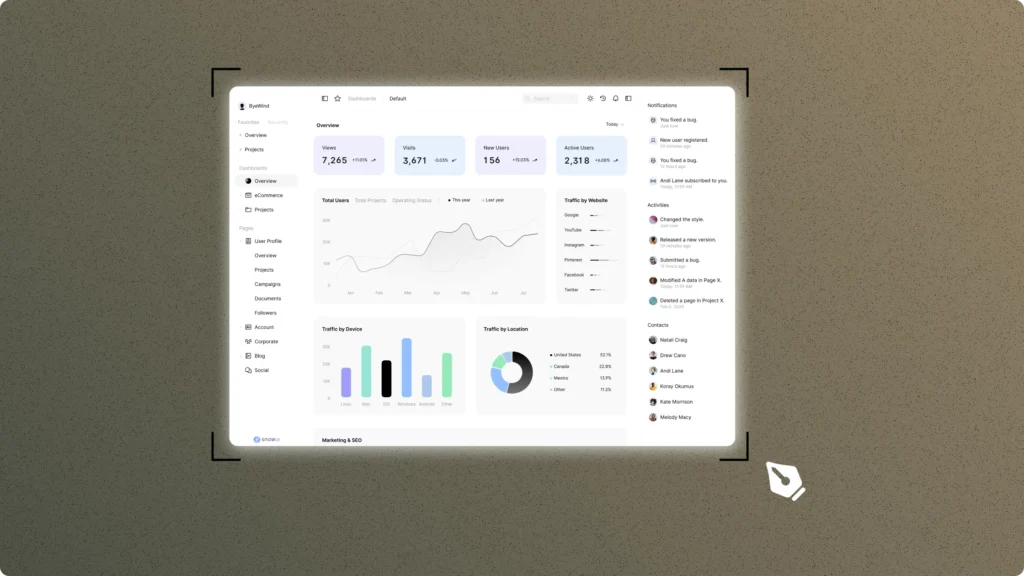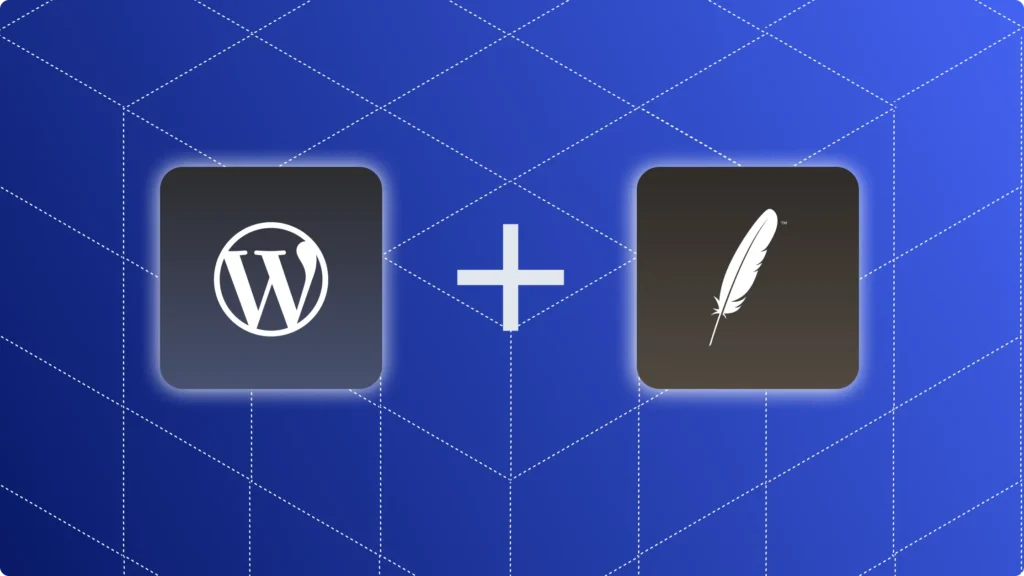As a developer, you may often find yourself in a situation where you need to extract data or modify the structure of an HTML page. This is where HTML parsing comes in. HTML parsing refers to the process of analyzing and manipulating the structure and content of an HTML document.
One common tool for HTML parsing is DOMDocument, a PHP class that provides an API for navigating and modifying the Document Object Model (DOM) of an HTML page. In this guide, we will cover the basics of using DOMDocument for HTML parsing, including setting it up, accessing and manipulating elements, and working with common use cases. By the end of this article, you should have a good understanding of how to parse HTML with DOMDocument and be able to apply these skills in your own projects.
Introduction to DOMDocument:
Before diving into the details of using DOMDocument, it’s helpful to understand what DOMDocument is and how it works. It is a PHP class that provides an API for navigating and modifying the Document Object Model (DOM) of an HTML page. The DOM is a tree-like structure that represents the structure and content of an HTML document. It consists of a hierarchy of elements, each with its own properties and attributes.
Using it, you can access and manipulate individual elements within the DOM, as well as modify the structure and content of the HTML document. This can be useful for tasks such as extracting data from an HTML table, modifying the layout of a page, or scraping data from a website.

In addition to its API for navigating and modifying the DOM, DOMDocument also provides several other useful features, such as the ability to load an HTML file or string, validate the structure of the DOM, and output the modified HTML as a string or file.
Overall, DOMDocument is a powerful and flexible tool for HTML parsing, and it’s widely used in PHP development. In the following sections, we’ll explore how to use it in more detail.
Setting up DOMDocument:
Before you can use DOMDocument, you’ll need to make sure it’s installed and available in your development environment.
Installing
If you’re using a PHP installation that includes the DOM extension, DOMDocument should already be available. You can check if it is installed by running the following code:
if (class_exists('DOMDocument')) {
echo "DOMDocument is installed";
} else {
echo "DOMDocument is not installed";
}If it is not installed, you can install it by enabling the DOM extension in your PHP configuration. On a Unix-based system, you can typically do this by adding the following line to your php.ini file:
extension=domIf you’re using a hosting provider or shared hosting environment, you may not have access to your PHP configuration. In this case, you can try contacting your hosting provider or server administrator to ask about installing DOMDocument.
Loading an HTML file or string into DOMDocument
Once you have installed it, you can begin using it to parse HTML. The first step is to create a new DOMDocument object and load an HTML file or string into it.
To load an HTML file, you can use the loadHTMLFile method:
$dom = new DOMDocument();
$dom->loadHTMLFile('path/to/file.html');To load an HTML string, you can use the loadHTML method:
$html = '<html><body><p>Hello, world!</p></body></html>';
$dom = new DOMDocument();
$dom->loadHTML($html);Once you’ve loaded the HTML into DOMDocument, you can begin accessing and manipulating the elements within the DOM. We’ll cover this in more detail in the next section.
Accessing and manipulating HTML elements with DOMDocument:
Now that you know how to set up DOMDocument and load an HTML file or string into it, let’s look at how to access and manipulate the elements within the DOM.
Finding elements by tag name or attribute
One common task when parsing HTML is finding specific elements within the DOM. DOMDocument provides several methods for finding elements, including getElementsByTagName and getElementsByAttribute.
Here’s an example of using getElementsByTagName to find all the p elements in the DOM:
$p_elements = $dom->getElementsByTagName('p');
foreach ($p_elements as $p_element) {
// do something with the p element
}And here’s an example of using getElementsByAttribute to find all the elements with a class attribute:
$class_elements = $dom->getElementsByAttribute('class');
foreach ($class_elements as $class_element) {
// do something with the element
}Modifying element content and attributes
Once you’ve found the element you want to modify, you can use DOMDocument’s API to change its content or attributes.
To modify the content of an element, you can use the nodeValue property:
$p_element->nodeValue = 'New content for the p element';To modify an attribute of an element, you can use the setAttribute method:
$p_element->setAttribute('class', 'new-class');You can also use the removeAttribute method to delete an attribute:
$p_element->removeAttribute('class');Adding and deleting elements
In addition to modifying existing elements, you can also use it to add new elements to the DOM or delete existing elements.
To add a new element, you can use the createElement method to create a new element object, and then use the appendChild method to add it to the DOM:
$new_element = $dom->createElement('div', 'New element content');
$dom->appendChild($new_element);To delete an element, you can use the removeChild method:
$parent_element->removeChild($element_to_delete);By using these methods, you can access and manipulate the elements within an HTML document to suit your needs. In the next section, we’ll look at some common use cases for HTML parsing with DOMDocument.
Examples of common HTML parsing tasks with DOMDocument:
Now that you know the basics of using DOMDocument to access and manipulate elements, let’s look at some common use cases for HTML parsing.
Extracting data from a table
One common task when parsing HTML is extracting data from tables. Here’s an example of how you can use it to extract data from a table:
$table_element = $dom->getElementsByTagName('table')[0];
$rows = $table_element->getElementsByTagName('tr');
foreach ($rows as $row) {
$cells = $row->getElementsByTagName('td');
$row_data = [];
foreach ($cells as $cell) {
$row_data[] = $cell->nodeValue;
}
// do something with the row data
}This code finds the first table element in the DOM, and then loops through each row (tr element) and cell (td element) to extract the data. You can then do something with the data, such as storing it in an array or inserting it into a database.
Modifying the layout of an HTML page
Another common use case for HTML parsing is modifying the layout of an HTML page. For example, you might want to add a new element to the page, change the order of elements, or delete elements that are no longer needed.
Here’s an example of how you can use DOMDocument to add a new element to the page:
$new_element = $dom->createElement('div', 'New element content');
$dom->getElementsByTagName('body')[0]->appendChild($new_element);This code creates a new div element with the content “New element content”, and then adds it to the end of the body element.
Scraping data from a website
HTML parsing can also be used for web scraping, which involves extracting data from websites for a variety of purposes. For example, you might want to scrape data from multiple websites to create a database of information or scrape data from a single website to extract specific information for your own use.
Here’s an example of how you can use DOMDocument to scrape data from a website:
$dom->loadHTMLFile('http://www.example.com');
$elements = $dom->getElementsByTagName('p');
foreach ($elements as $element) {
$data = $element->nodeValue;
// do something with the data
}This code loads the HTML of the website “http://www.example.com” into DOMDocument and then finds all the p elements on the page. You can then loop through the elements and extract the data you’re interested in.
These are just a few examples of the types of tasks you can accomplish with DOMDocument. In the next section, we’ll look at some tips and best practices for using DOMDocument in your projects.
Tips and best practices:
Now that you’ve learned the basics of using DOMDocument for HTML parsing, here are some tips and best practices to consider when using DOMDocument in your projects:
Handling errors and exceptions
DOMDocument can throw exceptions if it encounters errors while parsing the HTML. For example, if the HTML is not well-formed or if the DOM becomes invalid after modifying it, DOMDocument may throw an exception.
It’s a good idea to wrap your DOMDocument code in a try-catch block to handle these exceptions. This will prevent your code from crashing if an exception is thrown.
try {
// DOMDocument code here
} catch (Exception $e) {
// handle the exception
}You can also use the $dom->getErrors() method to get more information about the errors that occurred.
Performance considerations
When parsing large HTML documents or performing many operations on the DOM, it’s important to consider the performance of your code. DOMDocument can be slower than other HTML parsing libraries, especially when working with large documents or a large number of elements.
To improve performance, you can consider using a more lightweight HTML parsing library, or only parsing the parts of the HTML document that you need. You can also consider using a cache to store the parsed HTML so that you don’t have to parse it multiple times.
Debugging techniques
If you’re having trouble using DOMDocument, there are several techniques you can use to debug your code. For example, you can use the $dom->saveHTML() method to output the modified HTML as a string, which can help you see what changes you’ve made to the DOM.
You can also use the $dom->formatOutput property to pretty-print the HTML, which can make it easier to read and debug.
$dom->formatOutput = true;
echo $dom->saveHTML();Another useful technique is to use the var_dump function to output the properties and attributes of an element. This can help you understand the structure of the DOM and identify any issues with your code.
var_dump($element);Alternatives to DOMDocument
While DOMDocument is a widely used and powerful tool for HTML parsing, it may not always be the best choice for your project. There are several other HTML parsing libraries available, each with its own strengths and weaknesses.
For example, if you’re looking for a faster HTML parsing library, you might consider using the Simple HTML DOM library, which is designed for quick and easy manipulation of HTML elements.
On the other hand, if you need more advanced features such as support for XPath queries or namespaces, you might consider using the PHP DOM extension or a library like PHPCrawl.
It’s worth considering the specific needs of your project and comparing different HTML parsing libraries to see which one is the best fit.
Conclusion:
In this guide, we’ve covered the basics of using DOMDocument for HTML parsing in PHP. We’ve looked at how to set up DOMDocument, access and manipulate elements within the DOM, and work with common use cases such as extracting data from a table, modifying the layout of an HTML page, and scraping data from a website.
We’ve also covered some tips and best practices for using DOMDocument, including handling errors and exceptions, considering performance, debugging techniques, and exploring alternative libraries.
By following the techniques outlined in this guide, you should be able to use DOMDocument effectively to parse HTML in your own projects.
In summary, DOMDocument is a powerful and flexible tool for HTML parsing that can help you extract data, modify the structure of an HTML page, and perform many other tasks. By understanding how to use DOMDocument’s API to navigate and manipulate the DOM, you can use DOMDocument to solve a wide range of HTML parsing challenges.
That said, it’s worth noting that DOMDocument does have some limitations and may not always be the best choice for your project. For example, it can be slower than other HTML parsing libraries, and it may not have advanced features such as support for XPath queries or namespaces.
In the end, the best HTML parsing library for your project will depend on your specific needs and requirements. By considering the strengths and weaknesses of different libraries, you can make an informed decision about which one is the best fit for your project.
I hope this guide has been helpful in getting you started with using DOMDocument for HTML parsing. If you have any further questions or would like to learn more about HTML parsing, there are many resources available online, including PHP documentation and various tutorials and articles. Happy coding!







